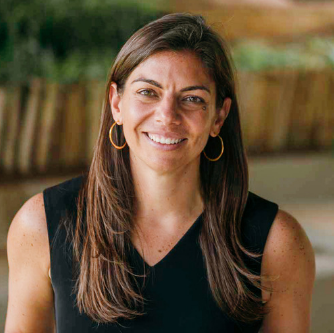Dalberg uses cookies and related technologies to improve the way the site functions. A cookie is a text file that is stored on your device. We use these text files for functionality such as to analyze our traffic or to personalize content. You can easily control how we use cookies on your device by adjusting the settings below, and you may also change those settings at any time by visiting our privacy policy page.
The impacts of climate change are not just environmental—they are fueling a public health emergency. Two recent gatherings hosted by Dalberg—a roundtable in collaboration with Northwell Health and the Institute for Health Metrics and Evaluation (IHME), followed by a webinar with the Global Impact Investing Network (GIIN), International Finance Corporation (IFC), and the World Economic Forum (WEF)—highlighted that the health consequences of climate change are not theoretical. They are disrupting lives and testing the resilience of health systems worldwide.
The evidence is overwhelming: climate change could strip away two billion years of healthy life (measured in disability-adjusted life years or DALYs[1]) and cost the world $12.5 trillion by 2050, according to joint research by Oliver Wyman and the WEF. Addressing this crisis requires multifaceted solutions grounded in three key pillars: leveraging data and metrics for decision-making, mobilizing private-sector leadership, and empowering communities. These pillars are deeply interdependent—data provide the foundation and metrics ensure progress is measurable and accountable, private-sector investments drive action, and communities deliver localized solutions.
Climate Data Are Critical but Not Sufficient
Data on the health impacts of climate change are invaluable, but action must extend beyond simply collecting information. Experts at the roundtable, including representatives from IHME and Northwell Health, emphasized the importance of data-driven solutions to monitor and predict health risks. For example, combining machine learning with satellite imagery enables the development of predictive models that map health risks by location and community.
However, having knowledge alone does not equate to progress. Data must inform direct interventions. Cities and healthcare systems need actionable insights to serve and support vulnerable populations. Examples include early warning systems, as highlighted by Dr. Malama Tafuna’i, a primary care physician from Samoa. Dr. Tafuna’i explained how her island nation is experiencing an uptick increase in diseases like dengue and chikungunya. Localized data can anticipate and mitigate such outbreaks, but only if health systems are equipped to respond. Predictive analytics can also optimize healthcare resource allocation during extreme weather events or design targeted vaccination campaigns for climate-sensitive diseases. When paired with actionable responses, predictive models can reduce disease outbreaks, enhance disaster preparedness, and save lives.
To ensure progress, measurable outcomes are essential. The panelists emphasized the need for standardized frameworks to assess climate resilience in health systems. Proposed metrics include reductions in climate-sensitive diseases, improvements in environmental indicators (such as air and water quality), and “co-benefit” metrics that measure health and environmental progress simultaneously. Accountability across sectors drives action, fostering integrated strategies and partnerships that yield both health and environmental benefits.
The Private Sector Can Lead Through Sustainable Investments
The private sector has the potential and resources to drive meaningful change at the climate-health intersection. Companies like Sanofi, represented by Priscille de La Tour during the webinar, demonstrate how to lead by example. Sanofi has adopted a multi-pronged approach—reducing its environmental footprint, developing climate-resilient medicines, and shifting focus toward preventive care. Climate stewardship is a guiding principle for healthcare institutions aiming for meaningful impact. Northwell Health exemplifies thisby installing solar panels, increasing electric vehicle charging stations, and incorporating environmental sustainability into medical training. These efforts not only reduce Northwell’s carbon footprint but also prepare its healthcare infrastructure for a sustainable future. By integrating sustainability into MD curriculums, Northwell ensures the next generation of doctors is equipped to address the growing challenges of climate change in healthcare.
Despite progress, challenges remain. As Anjli Kaushal of Quadria Capital noted, many climate-health solutions, such as AI-driven diagnostics and telemedicine for rural areas, are still in early development and carry high investment risks with uncertain returns. Carla Ricchetti of IFC highlighted the private sector’s critical role in advancing sustainable healthcare, decarbonizing supply chains, and developing climate-resilient infrastructure to mitigate risks, enhance public health systems, and improve community well-being.
Communities Hold Power that Must be Catalyzed
Communities, especially frontline populations, possess invaluable knowledge and potential to combat climate-health impacts. Discussions underscored the need to empower communities with localized data and resources to craft tailored solutions. For instance, in Samoa, food insecurity has driven a shift towar imported, processed foods, exacerbating chronic diseases like diabetes and hypertension. Community-led, culturally relevant approaches are essential to address such climate-induced health challenges effectively.
Empowerment goes beyond providing resources—it is about listening to and learning from traditional knowledge. Neil Vora, senior advisor for One Health at Conservation International, discussed how nature-based solutions—practices championed by indigenous communities for centuries—can mitigate climate risks, restore ecosystems, and prevent cascading health crises, such as zoonotic spillovers that could lead to pandemics., discussed how nature-based solutions—practices that many indigenous communities have championed for centuries—can mitigate climate risks, restore ecosystems, and protect against cascading health crises, such as zoonotic spillovers that could lead to pandemics.
A Unified Call to Action
The climate-health crisis demands a unified response. Solutions must harness data, drive private-sector investment, empower communities, and prioritize accountability. Governments must embed health resilience in climate policies, private investors need to fund innovative healthcare solutions, and communities must lead localized responses to secure a more resilient future.
As health becomes increasingly central to climate diplomacy, underscored at COP28, the time to act is now. We cannot wait for today’s data to become dire statistics. The health of our planet, and everyone on it, depends on the choices we make next.
[1] Disability-adjusted life years (DALYs) measure the burden of disease. One DALY represents the loss of one year of full health and is calculated as the sum of years lost due to premature mortality (YLLs) and years lived with disability (YLDs).
To learn more about Dalberg’s work at the climate–health intersection, contact:



